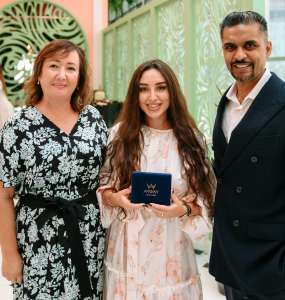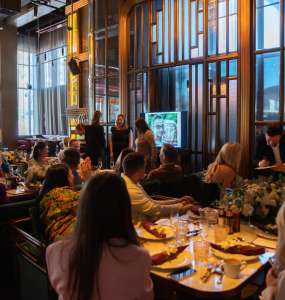Dominican cuisine: The past has given us the " good " of the present.
11.04.2017
The Dominican Republic is a colonial country, a “multiple voice” of paint and taste. Culture and location as if they'd prejudge the brightest gastronomical future of Dominica. The fertile soil, on the one hand, and diversity, and the mixing of cultures, on the other, created a unique palitre of simple but effective dishes attached to a non-inch creative approach.
.jpg)
The Dominican cuisine today is a fusion, a merging of the cultures that have left their mark in the form of a self-propelled culinary heritage, to which Dominicans are treated with great pride and respect.
The Dominican cuisine came from the chastromical customs of indigenous and Spanish conquistadors with African and European influences, and this creative process was further developed and enriched by the influence of Asians and immigrants from the Greater Antilles. From the Taino, the Dominicans inherited roots, such as Yuca, Taro, Potatoes, Selery, Batat and others. One of the most famous Indians who still occupy an important place in the Dominican kitchen is the Taleb, or the Hlab of the conquests, as the Spanish have called it, arriving on the island.
It is from the conquistadors that the indigenous population of the island of Espaniola has learned to cook food in boiling water, to use livestock from Europe and Indian specialies - peppers, oreganos, shafran, chicken, carrry and folderic. During Columba ' s second and third journey to the island of Espaniola, Spanish people landed from the Canary Islands. It was they who brought the first sugar cane to the continent and taught the local population to prepare a boulon that has become a famous soup in the years.
As a result of Africans, dominican gastronomy has been enriched by pits and platans (most bananas) that eat barren, hot or garlic.

The heat of the products came from Africans, as well as the palm oil used for it. It should be noted that the anti-Lebanese influence is still the main issue of what we know today as a Dominican cuisine. The islanders have had Dominicans.
Large contribution to the development of cooking Dominica Arabs were also brought into the country when immigrants from the Middle East, mostly from the late 19th century, entered the country. Lebanon♪ They enriched the Dominican cuisine with famous kibbi balls (quipes, kibbeh libanés), pigeons and various dishes from the bacclades. Knowing the origins and history of the Dominican cuisine, the more curious to explore the palitre of new tastes by testing the dishes that Dominica is proud of today.
Blue - Dominic pride
- El Moro - rice with various beans (fasoli, peas, guandules, etc.).
- La Bandera - white rice, beans and carcass meat with torso garrier (freshed plateanos).
- Sancocho - Plateau, Taro, Yuki, beef, chicken and pork.
- Locrio Different variations on rice with meat and seafood, the most popular of which is locrio with chicken, shrimp and brisket.
- Mangú - Pure from pre-war platinum. It's usually egg or hot salami.
- Sweet beans - beans prepared on cows and coconut milk, with the addition of bata and raisins.
- Coconut milk fish - It's a hot fish in a coconut milk sauce. It's a rice with beans and tones.
- Morir soñando - milk drink, orange juice and a lot of ice.
- Yaniqueque (Johny’s Cake) - a hot wheat flour.
- Mofongo - hot green dresses, smashed in garlic and squirrels.
- Mondongo - Cherry pork shirt.
- Chivo liniero - A carcass with a lot of chili peppers and an oregano.




